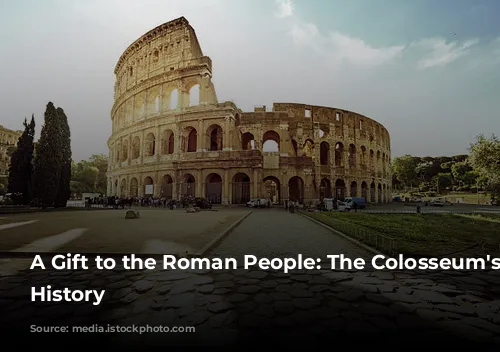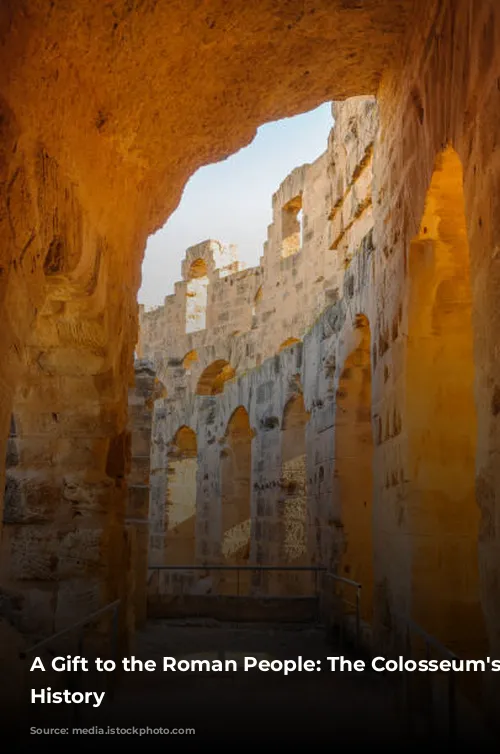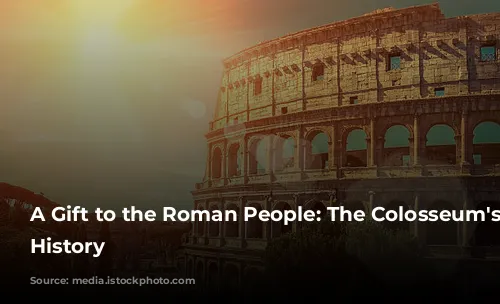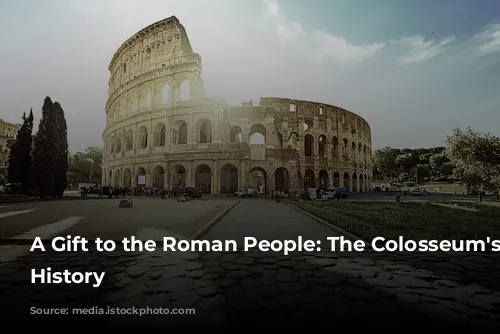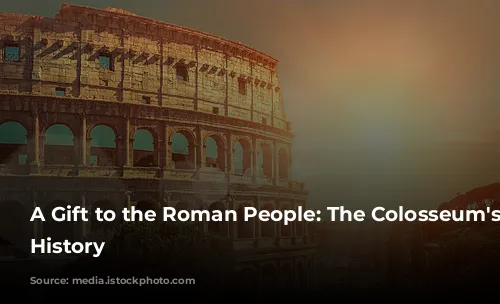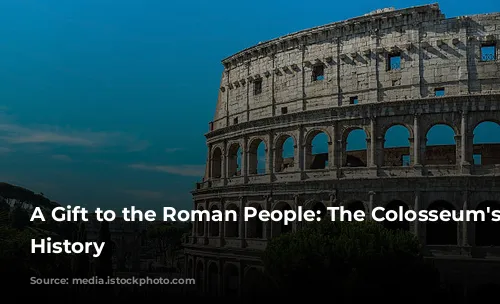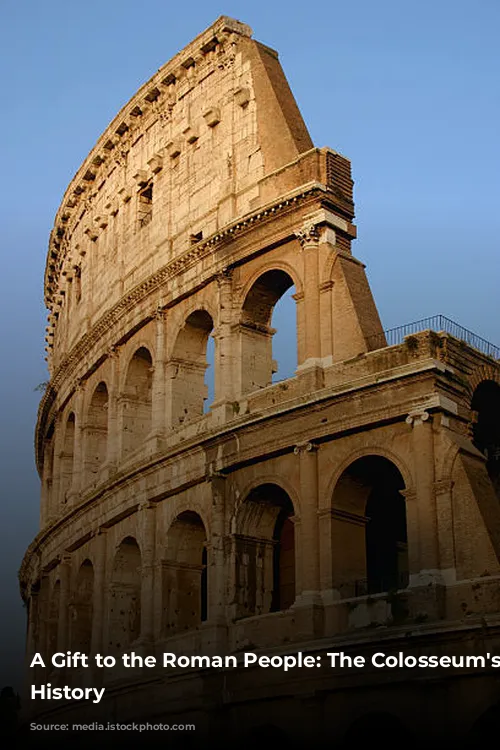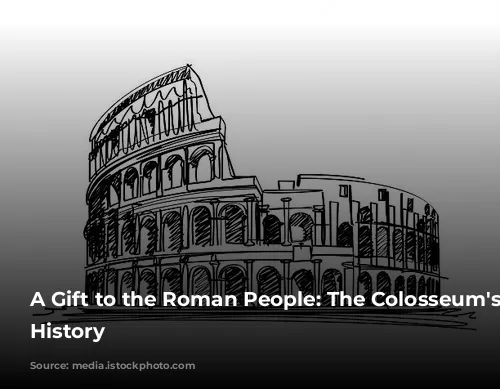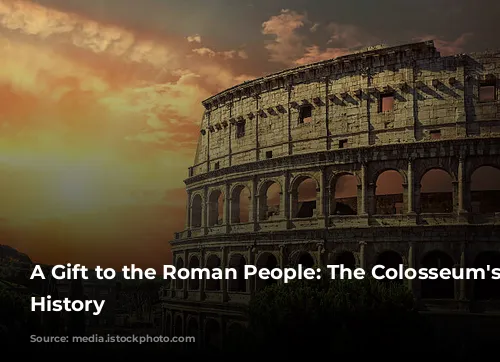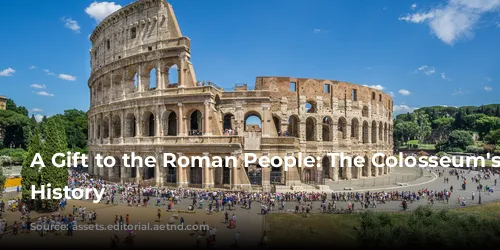Step back in time and picture a bustling city, Rome, brimming with life and activity. In the heart of this metropolis, a magnificent structure stands tall – the Colosseum, a testament to Roman grandeur and ingenuity. This iconic amphitheater wasn’t just a place of entertainment; it was a symbol of Roman power and a gift to the Roman people.
Its construction began around 70-72 AD under the rule of Emperor Vespasian, a ruler who sought to rebuild Rome after a tumultuous period of civil wars and upheaval. Vespasian, a member of the Flavian dynasty, aimed to restore order and provide the Roman people with a sense of unity and pride. He took the ambitious step of replacing Nero’s extravagant Golden Palace with a structure designed to inspire awe and bring people together.
The Colosseum, originally known as the Flavian Amphitheater, was a testament to Vespasian’s vision. This architectural masterpiece was a testament to Roman ingenuity and dedication, taking almost a decade to complete – a remarkably short time considering its immense scale. It was formally inaugurated in 80 AD by Vespasian’s son, Titus, with a spectacular 100-day festival. This grand opening showcased the Colosseum’s primary function – a venue for captivating gladiatorial combats, thrilling wild animal hunts, and other awe-inspiring public spectacles.

A Colossal Masterpiece of Engineering
Imagine the sheer scale of the Colosseum! This enormous structure, measuring a staggering 620 by 513 feet, was the largest amphitheater in the Roman world. Unlike earlier amphitheaters built into hillsides, the Colosseum stood proudly on its own, a testament to Roman architectural innovation. Its exterior boasted three tiers of arched entrances, a total of around 80, supported by semicircular columns. Each tier featured columns of a different order, or style, starting with the simple Doric at the bottom, then Ionic, and finally culminating in the ornate Corinthian at the top.
Step inside, and you’ll be amazed by the sight of the arena, designed to accommodate over 50,000 spectators. This vast space, a marvel of engineering, allowed for a wide array of spectacles. Imagine the excitement as gladiators clashed in fierce combat, wild animals roamed the arena, and even mock naval battles filled the space with water. The Colosseum was truly a stage for captivating entertainment, a spectacle for the masses.
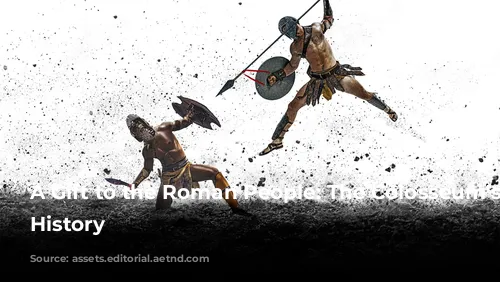
From Glory to Neglect: The Colosseum Over Time
Over time, the Colosseum witnessed the rise and fall of Roman civilization. For nearly four centuries, it was a hub of entertainment and social life. But, as the Western Roman Empire weakened and the Roman people’s tastes shifted, gladiatorial combats gradually faded into history, ending by the 6th century AD.
The once-glorious Colosseum fell into disrepair, ravaged by natural events such as lightning and earthquakes. Through centuries of neglect, it was even stripped of its materials, used to construct other buildings like the cathedrals of St. Peter and St. John Lateran, the Palazzo Venezia, and fortifications along the Tiber River. It seemed the Colosseum would be swallowed by time.
Fortunately, a glimmer of hope emerged in the 18th century. Several popes recognized the Colosseum’s historical significance and initiated efforts to preserve this iconic structure, viewing it as a sacred Christian site. While the debate continues about whether early Christian martyrs met their fate here, the Colosseum’s enduring legacy as a symbol of Roman power and resilience remained undisputed.
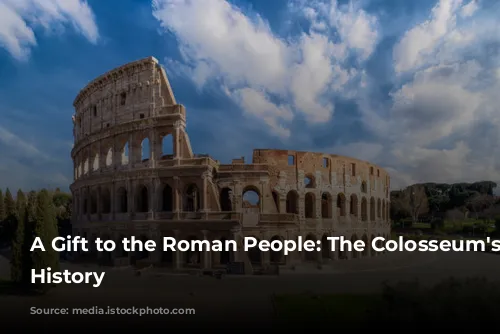
A Legacy That Endures: The Colosseum Today
The Colosseum’s journey through time has left its mark. Despite the ravages of neglect, natural disasters, and vandalism, the Colosseum still stands today, a testament to the power of human ambition and creativity. By the 20th century, nearly two-thirds of its original structure, including its marble seats and decorative elements, had been lost. But thanks to restoration efforts that began in the 1990s, the Colosseum continues to stand as a beacon of history, attracting tourists from around the world who are captivated by its grandeur and legacy.
Today, the Colosseum remains a powerful symbol of Rome’s enduring spirit, a testament to the city’s vibrant history, and a reminder of the grandeur that once defined the Roman Empire. Its story is one of resilience, reminding us that even in the face of adversity, human achievement can leave a lasting mark on the world.
